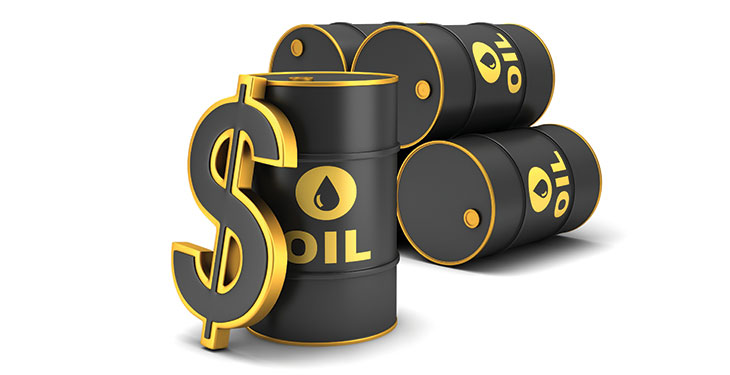The Economy Ministry published in October the draft law for mineral, petroleum, and hydro-mineral resources. The document includes a much anticipated new royalties’ framework for the upstream O&G sector. Indeed, after three years of uncertainty caused by rumors and various attempts to change the royalties’ regime, and against the backdrop of politically hyped expectations that the government’s take from the extraction of oil and gas should raise, the draft law has brought investors a needed degree of clarity and closure. [UPDATE: On December 5, the Minister of Economy announced the bill on royalties was withdrawn, and estimated that the entire legislative package on regulating the royalties system for mineral, oil and hydromineral concessions will be revised and voted in Parliament in February 2018.]
 Among other things, the National Agency for Mineral Resources (NAMR) will thus be able to organize a new call for concession tenders of new O&G perimeters – Round XI, nine years after the previous one.
Among other things, the National Agency for Mineral Resources (NAMR) will thus be able to organize a new call for concession tenders of new O&G perimeters – Round XI, nine years after the previous one.
On the face of it, the new royalties’ proposal is underwhelming and rather conservative. For oil and gas extracted onshore, the draft maintains the current legal provisions. Table 1 presents them for natural gas. The sole changes are about the frequency of payment (monthly, as opposed to quarterly, as it is currently the case) and the reference price used to calculate the value of gross production – the international Brent benchmark for crude oil and, insidiously, the average gas price on the OPCOM trading platform (as yet still not operational). Importantly, the draft states that the existing petroleum agreements will not be affected by ulterior changes – that is to say, until titleholders apply for concessions’ extension, case in which the terms will come into force.
A significant novelty in the draft law is the introduction of a separate royalty framework for the offshore oil and gas production. Table 2 presents it for natural gas only, yet the structure is the same for oil as well. The offshore framework consists of two royalty components: a fixed royalty that applies to the whole output of oil and gas, respectively – 8% for oil and 10% for natural gas – and a variable one, which increases stepwise along with the production level, applying beyond a defined threshold. Nonetheless, the sum of the fixed and variable royalties will not exceed the maximum quotas of the current framework: 13.5% for oil and 13% for gas.
Now, a few comments regarding the form and the content of the draft proposal. As to the form, the legislator’s conception has been to bring together within a single law all the royalties on mineral, petroleum and hydro-mineral resources. Yet a more user-friendly and transparent type of unification would have been to draw together under a single legal text all the elements that constitute the fiscal regime of upstream oil and gas. This includes, apart from royalties, the windfall tax for natural gas on profit resulting from the price liberalization. As a matter of fact, as shown in a 2017 Deloitte study, in Romania the level of effective upstream taxation increased in 2015 as compared to 2014 from 15% to 15,7% in the first half of the year and to 16.9% at the end of 2015, reaching 17.5% in 2016. On the other hand, on the back of depressed oil prices, the average royalty rates in EU member states decreased in 2015 to 10% from 11.7% in 2014. At the end of the day, a key question is how competitive is our overall fiscal framework in the O&G upstream compared to other potential investors’ destinations.
Regarding the characteristics of the proposed royalty framework, it is again obvious that a search for simplicity and uniform applicability comes at the cost of progressivity and differentiation. Progressivity means that the royalty rate ought to increase as the value of output increases, and to accordingly diminish as that value decreases – on the back of production volume and price. In practice, a fiscal system that is not progressive – hence it is regressive – will not encourage upstream investors to put money in an environment of low oil and gas prices, and will not offer a satisfying government’s take in case the prices high.
In the Romanian system, the royalty on gas production is the same at equal outputs, regardless of varying extraction costs over time. This leads the operator to reduce the level of investment as the prices fall – which has been in fact observed in the Romanian upstream over the last couple of years. Hence, taxing production or revenues is a regressive taxation, as higher cost/lower profit firms end up paying more relative to their profit than low-cost firms.
Differentiation means that the royalty framework ought to be tailored for the geological specifics of Romania and to draw meaningful distinctions, to ensure that the underground value of a field in efficiently extracted to the mutual interest of state and operator. Thus, while the onshore/offshore distinction is a step forward, more differentiation should have been put in place within each of these domains: deep water, shallow water, field maturity, enhanced recovery technology etc. A flat 10% royalty on offshore gas production regardless of the field’s characteristics will likely discourage operators to continue production as the field output starts to decrease after plateau and goes in the tail phase. Therefore, sizeable gas volumes risk being left underground.
As to the onshore, there are over 400 oil and gas fields in Romania and over 13,000 active wells. The country has one of the lowest production per well EU-wide: 21 boe/day/well, compared to 2,350 in Norway, 964 in Denmark, 363 in UK and 271 in Italy (Deloitte 2017). Besides, the Romanian fields have a high degree of fragmentation; more than 25% of oil is extracted with enhanced recovery, which is capital intensive (increasing reservoir pressure, deep drilling etc.). Hence, it is in the Romanian state’s interest to offer fiscal incentives to operators of such fragmented and mature fields so that investment in more technology is made to access those hard-to-get hydrocarbons.
Conclusion: While the new royalties’ proposal is much less damaging than many have feared, it is certainly not a modern, progressive and differentiated one, able to offer a long-term win-win deal to the state and investors alike. It is a simple one, which may accommodate the weak institutional capacity of ANRM. But it is also regressive, likely to discourage investment in an environment of increasing operational costs.
Romania needs a more sophisticated O&G fiscal framework, well-adjusted to its geological reality and flexible enough to withstand the notorious volatility of oil and gas markets for at least the duration of an investment cycle in this industry (25-30 years). Otherwise, Romania will probably have to undergo the pain of renegotiating again the O&G fiscal regime in a decade at most.
The Energy Policy Group has outlined in a June 2015 policy paper named “Romanian Offshore Oil Fiscal System” the principles of a progressive, differentiated, and flexible royalties’ framework.
—————————————-
This analysis firstly appeared in the printed edition of energynomics.ro Magazine, issued in December 2017.
In order to receive this issue of energynomics.ro Magazine, we encourage you to write us at office [at] energynomics.ro to include you in our distribution list. All previous editions are available HERE.
